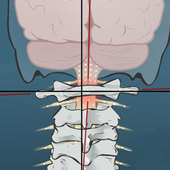How to make your pain get out and stay out!
 Taking action to keep an issue from happening in the first place is called primary prevention, but most of us struggle with that level of proactivity. When a patient presents to our clinic during a period of suffering after primary prevention is ignored, fails, or just wasn’t possible, they often express a willingness to do anything we suggest in the hopes that their situation will improve.
Taking action to keep an issue from happening in the first place is called primary prevention, but most of us struggle with that level of proactivity. When a patient presents to our clinic during a period of suffering after primary prevention is ignored, fails, or just wasn’t possible, they often express a willingness to do anything we suggest in the hopes that their situation will improve.
There seems to be endless funds available to research how to fix a problem, but what about keeping it away once it’s resolved? For some people, only one episode of an issue is enough for them to be proactive from then on. Most of us, though, once we feel better, have trouble prioritizing proactivity to keep the problem from recurring.
What should I do?
If you’ve skipped the primary prevention and find yourself with an issue, secondary prevention is taking action to minimize the likelihood of a recurrence of a previous problem. In our office, we call this phase Recovery Care (RC), and this is typically engaged once initial symptoms are reduced. Most patients choose to begin this care, but unfortunately, failure to follow through is something we see regularly. Almost half of our patients that noticed significant improvement in their symptoms never make it through the transition from simply resolving their symptoms to recovering from them. Resolving symptoms means that the situation is controlled enough that you are no longer hurting, while recovery involves minimizing the underlying dysfunction as completely as possible.
Clinically speaking, problems will likely recur unless the underlying dysfunction that contributed to the development of the problem is managed properly; typically, this isn’t accomplished until after symptoms are sufficiently resolved. Unfortunately, by then, many people have, understandably, moved on to prioritizing something else. This wouldn’t be an issue if the likelihood of recurrence wasn’t so high in spinal-related conditions.
What are the next steps?
 Since the rule for symptoms associated with a spinal injury is recurrence, our job is to minimize the likelihood of relapse and maximize the capability of the body to manage an issue if it re-appears. This ultimately involves a level of proactivity that is challenging for most patients to prioritize. The sad reality is that injured areas never heal completely back to the strength they were before the injury. Some patients’ injuries are mild enough that they can comfortably compensate and can be released from active care. After recovery, some patients choose to shift to Maintenance Care (MC) to minimize the likelihood of a future recurrence.
Since the rule for symptoms associated with a spinal injury is recurrence, our job is to minimize the likelihood of relapse and maximize the capability of the body to manage an issue if it re-appears. This ultimately involves a level of proactivity that is challenging for most patients to prioritize. The sad reality is that injured areas never heal completely back to the strength they were before the injury. Some patients’ injuries are mild enough that they can comfortably compensate and can be released from active care. After recovery, some patients choose to shift to Maintenance Care (MC) to minimize the likelihood of a future recurrence.
What is Maintenance Care?
Maintenance care is meant to stop a severe regression of the condition. This type of care may consist of periodic examinations to determine whether the patient may benefit from chiropractic adjustments to eliminate structural imbalances.
There are those patients that never completely recover and are left with an ongoing issue, and in these cases, we engage tertiary prevention to proactively take action to minimize the impact of an existing problem. In our office, this phase is called Supportive Care (SC). The objective of Supportive care is to prevent recurrence or reactivation of the condition and thus keep the patient productive in his/her occupation or activities.

To put this in perspective, I recently had a long-time patient inadvertently put this to the test. For years he came in regularly for a check-up to keep chronic symptoms of a severe injury manageable (tertiary prevention). For some reason, he decided to veer off his normal proactive supportive visit frequency (a check-up every couple of months) to see if he could manage on his own without intervention. Within 12 months, this experiment had the unfortunate consequence of him suffering with gradually increasing pain, and he eventually returned to the clinic for an appointment. His lack of proactivity caused us to need many appointments as we worked to help calm the dysfunction and associated symptoms caused by a year of neglect. As a result of the recurrence of pain, this patient’s ‘experiment’ served to reinforce that what he had been previously doing to manage the dysfunction allowed him to stay ahead of the issue. This worked better for his body than just reacting when things were no longer tolerable.
You see, the real job after an issue is fixed is to manage it with as few visits as possible while keeping things as good as possible. It’s sort of counterintuitive that if we do our job really well, we actually want to see you less often!
Maintenance Care – let’s do this!
Recently, the chiropractic profession in Norway contributed some research to our understanding of the benefit of maintenance care (Eklund et al. Chiropractic & Manual Therapies (2020)). They defined maintenance care as “receiving care at regular pre-planned intervals regardless of symptoms”. They found that those in their study that were “receiving MC had flat pain trajectories around each new treatment period and reported fewer days with pain compared to patients receiving the control intervention.” The control intervention in this study entailed waiting for a problem to happen and then reacting by making an appointment.
We are all familiar with maintenance care in dentistry, and that works well and is widely accepted in our society. Almost everyone will experience back or neck pain in their lifetime, so being proactive to try and minimize the likelihood of pain associated with spinal dysfunction makes sense. Our job is to support you in making a decision that best fits your life, and we want to help you manage your condition with minimal care. We recognize that prioritizing being proactive can be a big challenge. But, if we listen to the science as well as look back on our patient histories, it tells us that the rule is recurrence, and proactive management will typically cost less in the long run in both suffering and dollars.
Don’t ghost us, just call!
While considering preventative and maintenance care during our office’s strategic planning retreat in 2021, we created a new metric in our office. We’ve called it our ‘ghosting’ metric, and it measures the number of patients that pause their care without chatting with us or letting us know why they are making that decision. To minimize the number of patients that “ghost us”, we invite you to let us know if you feel ready to pause your care. We want you to know that our care is centred around your goals and your needs. If your goals are met or needs change, you might feel ready to be released from active care. When you feel that you’ve received enough care in our office, we will support you in that decision. If you need our help in the future, you’re always welcome to return.
 In the end, we are working to help you achieve your goals and minimize any interference in your life from spinal health challenges. Our goal is to facilitate our patient’s ability to maintain spinal balance for the rest of their life with as few adjustments as possible. Factors such as trauma, degenerative disease, and chronic misuse can weaken spinal integrity, either temporarily or permanently because of the spine’s functional nature. Therefore, maintaining spinal balance may require periodic care for some patients. It is truly in the best interest of the patient not to allow a functionally weakened area of the spine to progress to a symptomatic level if such can be prevented through examination and appropriate care if needed.
In the end, we are working to help you achieve your goals and minimize any interference in your life from spinal health challenges. Our goal is to facilitate our patient’s ability to maintain spinal balance for the rest of their life with as few adjustments as possible. Factors such as trauma, degenerative disease, and chronic misuse can weaken spinal integrity, either temporarily or permanently because of the spine’s functional nature. Therefore, maintaining spinal balance may require periodic care for some patients. It is truly in the best interest of the patient not to allow a functionally weakened area of the spine to progress to a symptomatic level if such can be prevented through examination and appropriate care if needed.
Just give us a call, we are always here to help!

Dr. Jeff Scholten
NUCCA Chiropractor
The Vital Posture™ Clinic
Calgary, Canada



